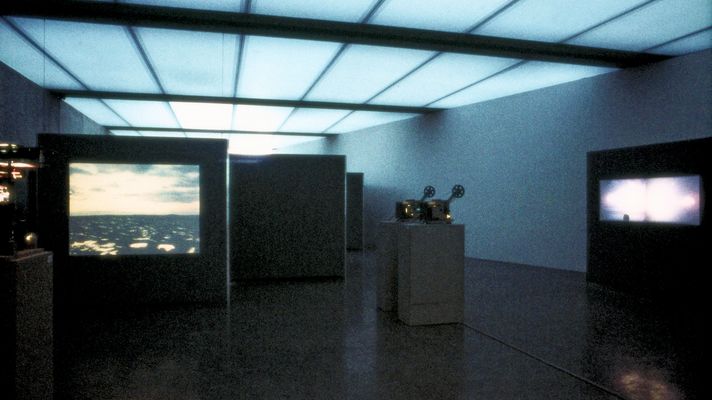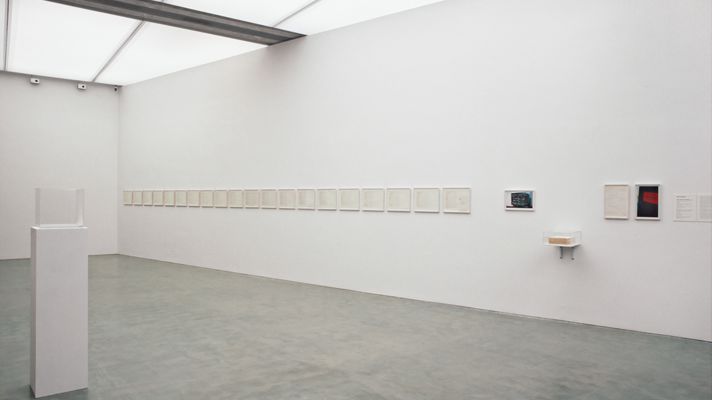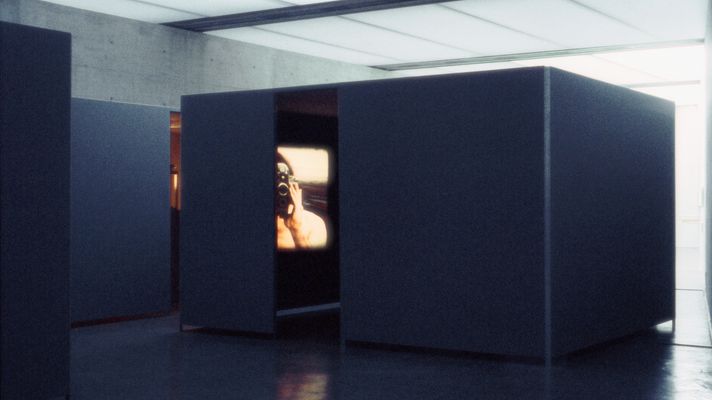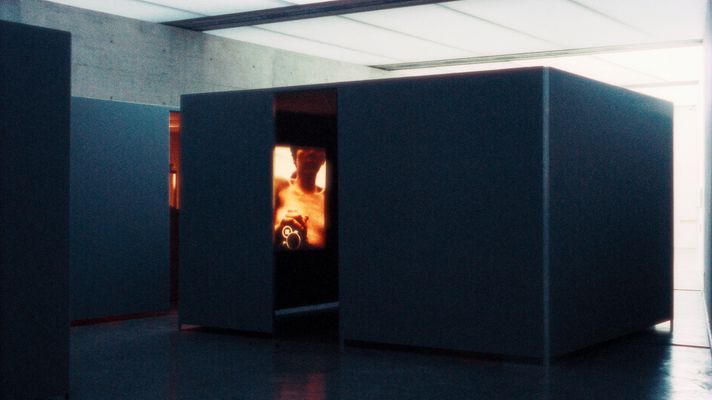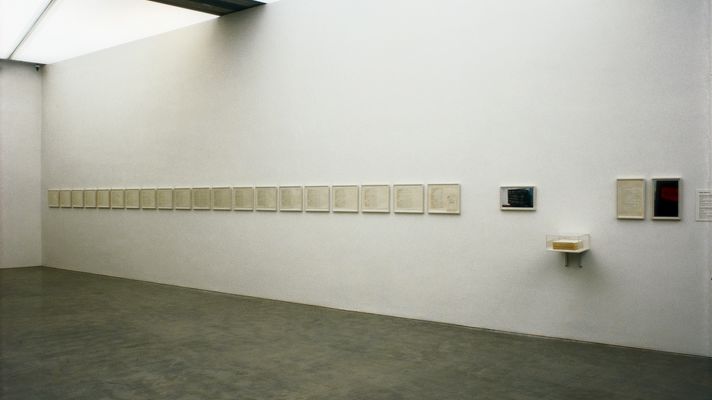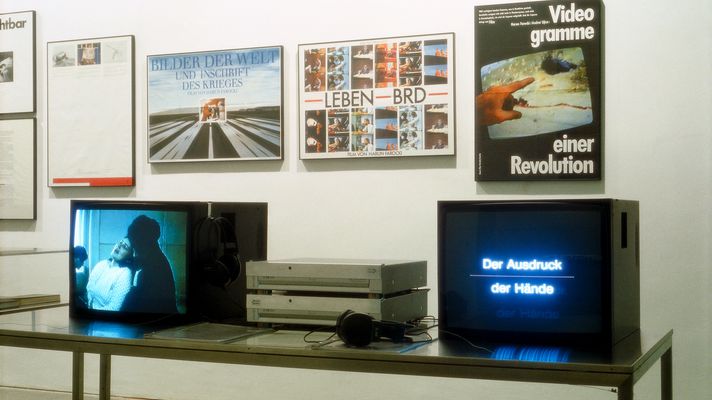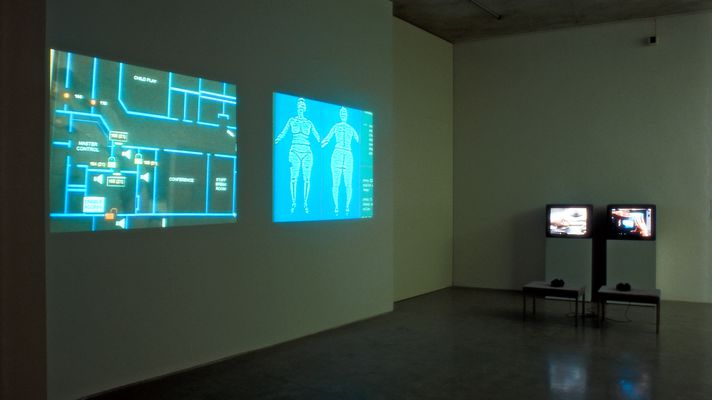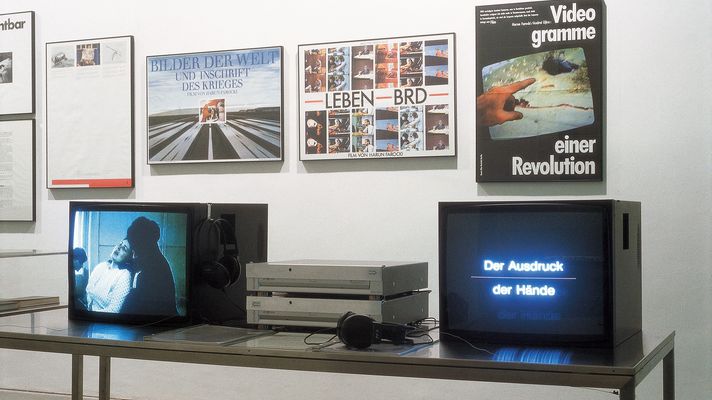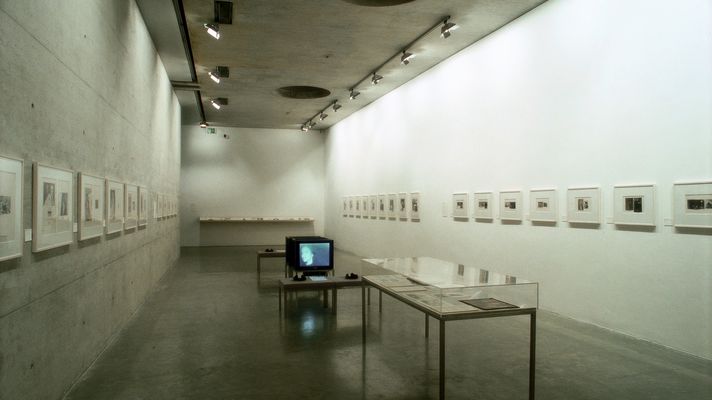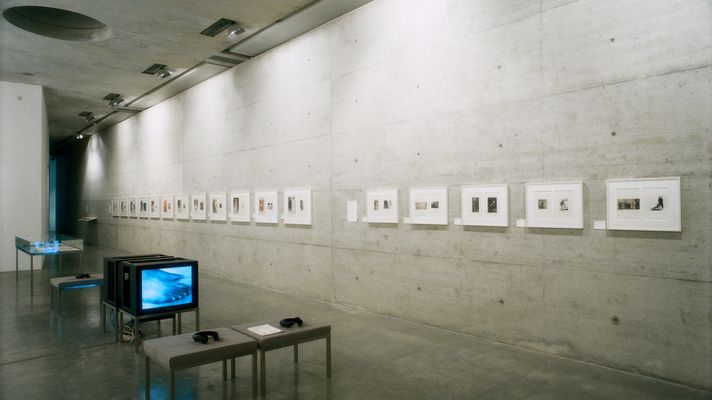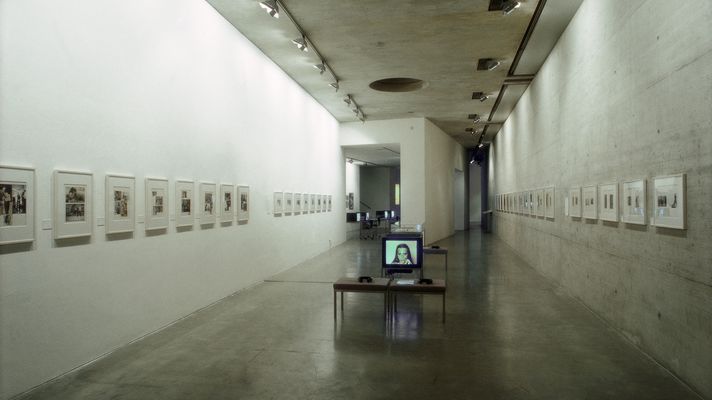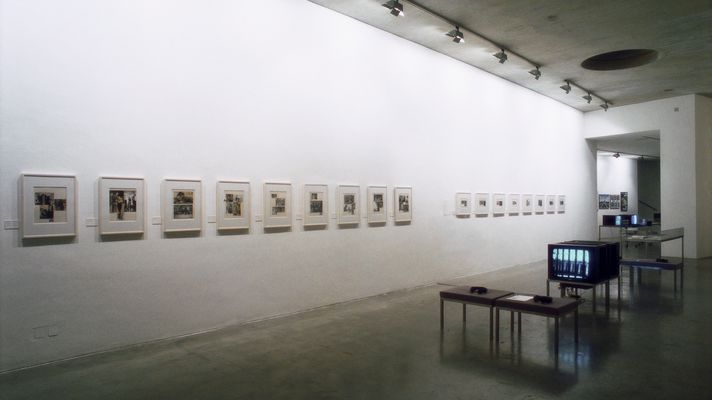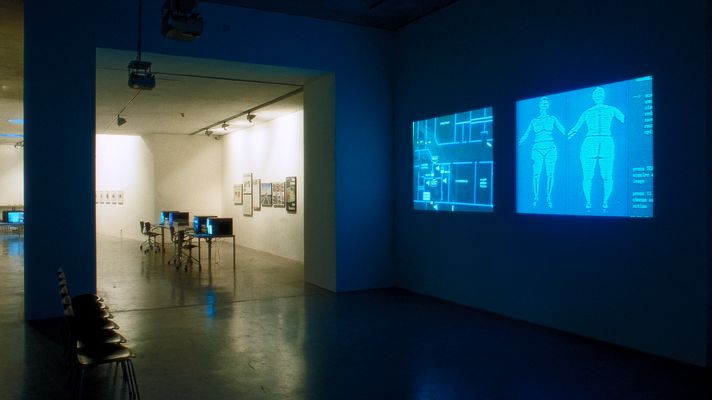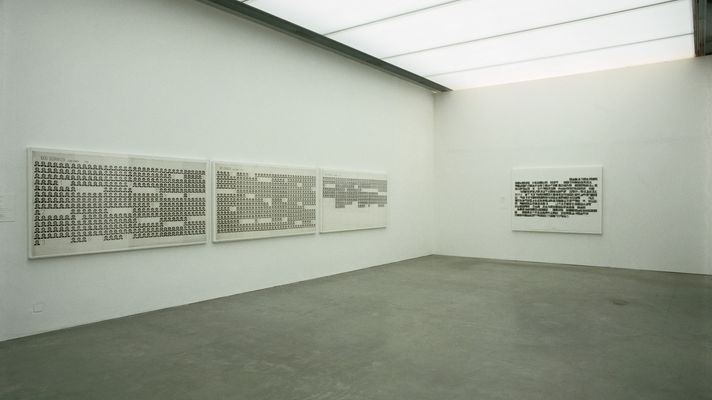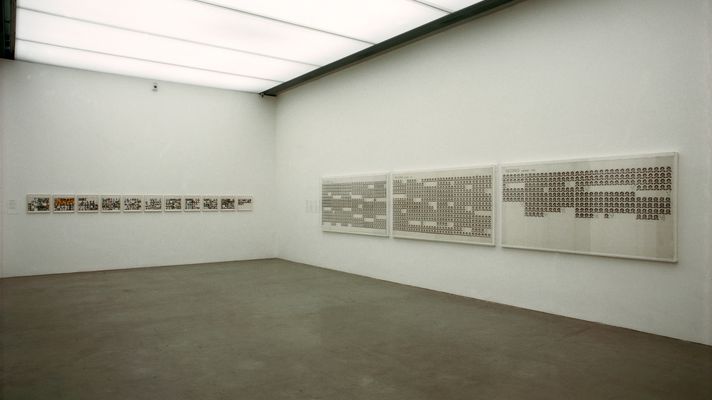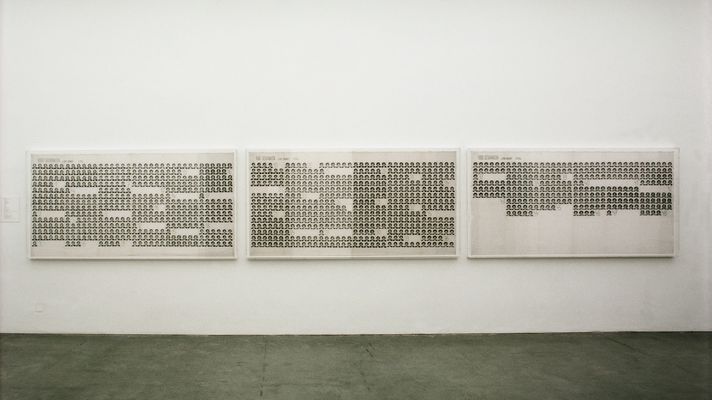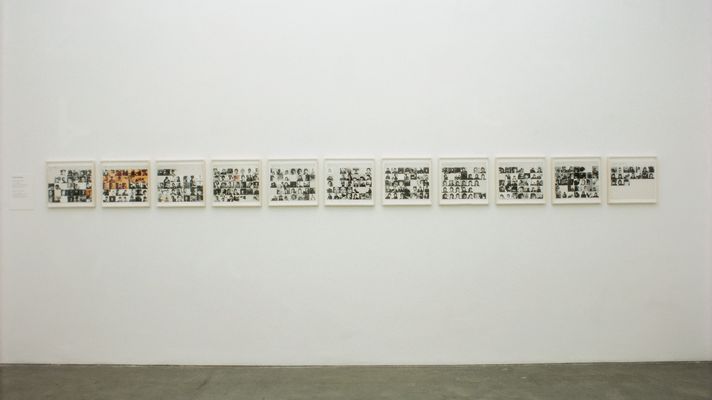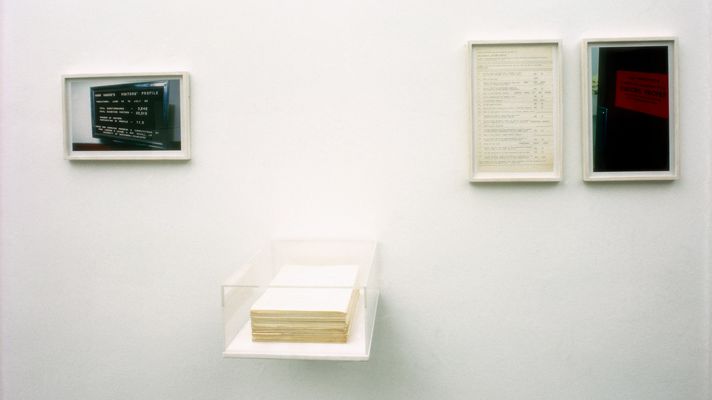Collection
Works by Dan Graham, Sanja Ivekovic, Hans Haacke, Friedl Kubelka, Harun Farocki
Opening: September 4, 2003, 7 p.m.
5 September through 21 December 2003
Place of exhibition: Generali Foundation, Wiedner Hauptstraße, 1040 Vienna
Since its establishment in 1988, the Generali Foundation has steadily built up a collection of contemporary art that now enjoys an international reputation. The collection's highly distinctive character results from its focus upon selected artists in connection with specific themes. An essential feature of these works is their critical approach, manifested both in form and content, to socio-political issues, the role of the media, and, naturally, questions related to art. This year's fall exhibition is conceived as a close-up of the Generali Foundation Collection and presents newly acquired works by five artists.
The œuvre of the influential American artist Dan Graham (1942, Urbana/USA, lives in New York) explores the relationship between social space and the individual. In his early film installations, he examines the perception of space and time, and the awareness of physicality in mediated interaction. "Sunset to Sunrise" (1969), "Binocular Zoom" (1969/70), "Roll" (1970), and "Helix/Spiral" (1973) will be shown in Austria for the first time, complemented by a presentation of "Body Press" (1970-72). This work, filmed in a glass cylinder, marks an interface between Graham’s film installations and his architectural works. It has been in the collection for some time and has already been displayed as part of it.
Sanja Ivekovic (1949, Zagreb/HR, lives in Zagreb/HR) is one of the first explicitly feminist artists to have emerged from former Yugoslavia. In her serial photo montages "Double Life" (1975), "Tragedy of a Venus" (1975), "Bitter Life" (1975), and "Sweet Life" (1975/76), she juxtaposes media images with private pictures that contain parallels in poses and props. The found-footage material employed ranges from advertisements and pictures of Marilyn Monroe, to newspaper cuttings that show, on the one hand, everyday misfortune, and, on the other, the glorified life of high society. In addition to the photo montages, video works by the artist made since the mid-seventies will be shown, in which she features as a protagonist. Inscribing herself into the public discourse, Ivekovic thus makes visible collective social codes of behavior and their origins in the gender-specific, standardized patterns employed by mass media.
Hans Haacke (1936, Cologne/GER, lives in New York) defines his art as an analysis of, and reflection on, social structures. In the late sixties and early seventies he carried out a series of polls involving visitors to private and public art galleries, and other art institutions such as Documenta 5, 1972. For all but two of these surveys, Haacke used a questionnaire with ten demographic questions on age, religion, sex, income, etc., and ten questions on current social and political problems. The "Visitors' Profile" (1971), compiled during the exhibition "Directions 3: Eight Artists" at the Milwaukee Art Center, also follows this pattern; it will be presented here for the first time. The questionnaire is the same as the one planned for a solo exhibition in the New York Guggenheim Museum. The exhibition was, however, cancelled by the then director shortly before it opened because of this project and two works about the real estate situation in New York.
In her conceptual photographs and films, the Austrian artist Friedl Kubelka (1946, London/GB, lives in Vienna) questions the (self) portrait as a means of pictorial representation. The project "Year's Portraits", in particular, carried out every five years since 1971, illustrates her personal approach to notions of identity and its construction. On display are "The First Year Portrait" (1972-73) and "The Second Year Portrait" (1977-78) of the artist, as well as "One Thousand Changing Thoughts" (1980), a portrait of her mother. Kubelka's film works since 1968 are, like her photographs, to be understood as portrait sketches. The processes of filming or photographing themselves, as well as the allocation of the positions in front of and behind the camera, are inherent themes in her artistic practice. In addition to analyzing the object, Kubelka further undertakes a formal examination of the media photography and film.
As a critical observer of political and cultural developments, the German "auteur filmmaker" Harun Farocki (1944, Novi Jicin/CZ, lives in Berlin) has been exposing the hidden content of media images in their various codes since the end of the sixties. A principal focus of his inquiry is the connection between image production, distribution, and reception. At first, against the background of the revolutionary ideas of the sixties, Farocki used film as a means of political agitation. Later, he developed a strategy of editing and composition that calls into question the medium of images itself. In so doing, Farocki investigates both the interactions of historical processes and their medial representation, and the way the camera is made an instrument of surveillance and control. The exhibit will range from the early "guerilla film" "Inextinguishable Fire" (1969) and documentary films like "How to Live in the FRG" (1990) to more recent productions such as "Eye Machine 1" (2001). In addition to Farocki's films displayed in the form of a comprehensive video archive, the two highly debated video installations from the collection, "Interface" (1995) and "I Thought I Was Seeing Convicts" will be on view.
Curator: Sabine Breitwieser
Assistant Curator, Exhibition Coordination: Luisa Ziaja
